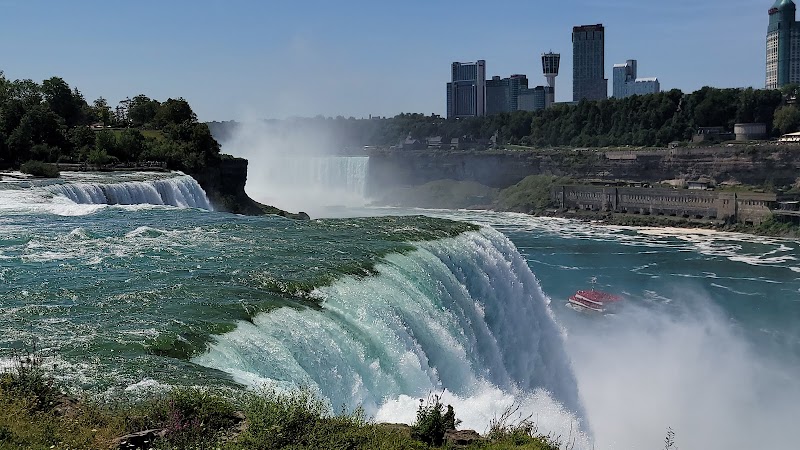
Winter Snowshoe Hikes in South Wales, New York: Trails That Test and Reward
South Wales, New York’s winter trails offer snowshoe adventurers a mix of realistic challenges and beautiful forest landscapes. Packed trails and sweeping views reward careful preparation, making these hikes ideal for those wanting a solid winter outdoor experience close to Buffalo.
Layer Up Smartly
Wear moisture-wicking base layers with insulated outerwear and pack extra gloves and a hat; winter conditions here can change fast.
Bring Traction Devices
Snowshoes are a must, but microspikes are highly recommended for icy or steep sections to prevent slips.
Hydrate Consistently
Cold air dehydrates without obvious sweating; carry insulated water bottles to avoid freezing and sip regularly.
Start Mid-Morning
Aim for a mid-morning start to benefit from daylight conditions and slightly warmer temperatures for safer hiking.
Winter Snowshoe Hikes in South Wales, New York: Trails That Test and Reward
South Wales, New York offers a winter experience that challenges the body and sharpens the senses. Trails here stretch through forested hills wearing their snow coat like a quiet dare. The air is crisp; each breath a reminder that this wilderness moves with intent and can’t be rushed. Snowshoes crunch into packed snow, and the terrain pushes and pulls—frozen streams daring your steps, winds whispering over ridges that hold wide views if you’re ready to climb.
The most popular route is the Chestnut Ridge Park trail—5.2 miles round trip with an elevation gain of about 650 feet. It’s a mix of gentle ascents on well-defined paths and steeper sections where footing demands focus. The ground beneath will shift from firm packed snow to softer drifts, making traction unpredictable. Expect patches of ice underfoot; microspikes or crampons can back you up if a sudden slick arrives.
Along the way, towering pines stand like guardians, their branches heavy with snow, brushing against each other in the wind’s conversation. Look for subtle wildlife tracks, signs of life moving beneath the winter cloak—deer trails crisscross, and the occasional flicker of a red squirrel is a spark of color amid white and grey.
Timing your hike for mid-morning offers stable temperatures and the best light filtering through the canopy. Arrive early enough to start with well-fueled energy, and keep water handy—cold weather demands hydration that’s easily overlooked. Footwear should be waterproof with solid ankle support, paired with layered, moisture-wicking clothing to manage changing exertion levels.
While the trail rewards with calm, white scenery, it doesn't forgive complacency—the forest is fiercely itself, indifferent but alive. Navigational tools like a GPS or a reliable trail map are necessary; snow can obscure markings. When you reach the summit, the wind opens wide skylines across Cattaraugus Creek’s frozen ribbons and surrounding hills, a payoff that’s straightforward but invigorating.
At South Wales, winter snowshoeing sits at the intersection of thrill and practicality. You’re stepping into a weathered, active landscape with respect and preparation, meeting the season head-on and coming back with the quiet satisfaction of having matched pace with a natural force that never waits. Whether this is your first winter hike or one of many, these trails deliver an experience both solid and spirited.
Nearby Trips
All Adventures
Boat Charters
Water Activities
Adventures near South Wales, New York
Discover the unique and memorable adventures that make South Wales, New York special.
Frequently Asked Questions
Are the trails in South Wales clearly marked during winter?
Trail markers exist but can be obscured by snow or ice. It’s important to use a GPS or a detailed map and stay alert to landscape features to avoid losing the trail.
What kind of wildlife might I encounter in winter here?
Deer are common, as are foxes and squirrels. Look for tracks in fresh snow to spot their presence. Birds like chickadees and woodpeckers remain active and add movement to quiet forests.
Is it safe to hike solo in winter at South Wales?
Experienced hikers can manage solo trips if properly equipped and informed. Always inform someone of your plan, carry a fully charged phone, and be ready for sudden weather changes.
Are dogs allowed on the snowshoe trails?
Dogs are permitted but should be kept on a leash due to wildlife presence and other hikers. Ensure your dog is fit for winter conditions and has paw protection for icy or sharp snow.
What’s the best window for winter snowshoeing here?
December through February usually offer the most reliable snow coverage and cold temperatures that preserve trail conditions. January is often the peak month for consistent snowpack.
Are there places to warm up or get supplies nearby?
South Wales is a small community, so the closest supply and warm-up locations are in Buffalo, about 20 minutes away, where you’ll find ample options for gear, food, and accommodations.
Recommended Gear
Snowshoes
Essential for traversing snowy terrain and preventing post-holing in deep snow.
Microspikes or Crampons
Adds grip on icy trail sections where snowshoes alone may slip.
Insulated Water Bottle
Prevents water from freezing and keeps you hydrated during cold hikes.
Thermal Base Layers
Helps regulate body heat while wicking moisture during exertion.
Local Insights
Hidden Gems
- "The overlook near Chestnut Ridge’s summit offers quiet panoramic views that many hikers miss by returning early."
- "A frozen waterfall off one side trail is a striking visual and rarely crowded in winter."
Wildlife
- "White-tailed deer"
- "Red squirrels"
- "Winter-resilient birds like woodpeckers and chickadees"
History
"South Wales was once a hub for early settlers and farming communities. Some old stone fences and foundations hint at this history just off main trails."
